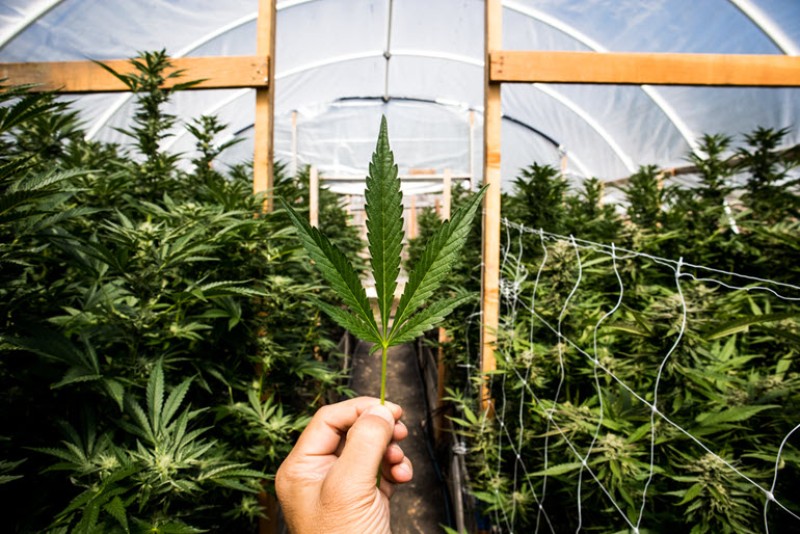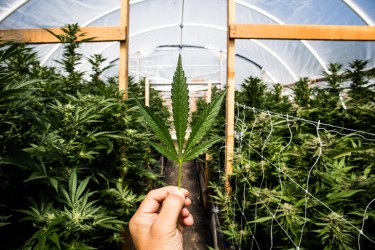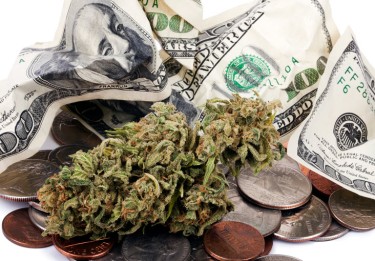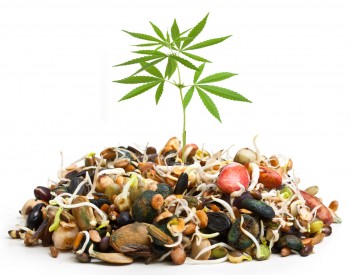The legal cannabis industry may seem like a lucrative cash cow to outsiders. Although there is potential for significant profits, the expenses associated with running a cannabis business can be pretty high, especially for those at the bottom of the supply chain - the growers.
In addition to the costs of labor, utilities, and fertilizers used in crop cultivation, farmers must also pay for the transportation of their products to different parties, such as processors, distributors, and retailers. They must also pay numerous taxes and fees frequently deducted by state and local authorities to receive a cultivation license.
Cultivation Costs: Indoors vs. Outdoors
The cost of indoor cultivation is generally higher, primarily due to exorbitant rents, which can be as much as $75 per square foot in specific locations. The average cost of greenhouse and combination cultivation across the country is approximately $50 per square foot. Indoor operations are also more costly because they require complete control of the environment, necessitating various equipment such as grow lights, temperature, humidity control systems, and automated water and nutrient technology.
Cutting-edge lighting systems alone can cost small growers up to $120,000, while security systems may exceed $50,000, and other essential equipment can amount to around $150,000 in expenses. Depending on the size and location of the business, a lean operation may only yield a gross profit margin of 55 to 57 percent.
In contrast, outdoor cultivation relies on natural sunlight, allowing Mother Nature to regulate environmental conditions. But due to the unpredictability of natural elements, this can both be a blessing and a curse. Land for outdoor growing is priced between $10 to $17 per square foot, though it can be substantially more in some locations. Automating tasks is also more challenging in outdoor grows, which can result in higher labor costs.
Sun-grown operations can yield multiple harvests annually in states with a moderate climate like California. However, in states with shorter growing seasons, like Illinois, Ohio, Colorado, and New York, cultivators must cultivate at least some crops indoors to ensure year-round production.
The cost of making a profit by growing marijuana varies from state to state. Cultivators, suppliers, and consultants have shared rich insight into fees, challenges, and strategies for managing expenses to determine estimated figures.
Nevada
Nevada faced a significant concern when transitioning to recreational marijuana: whether the supply would meet the demand. This was partly due to the state's high taxes and fees, such as the $5,000 application fee for cultivators, a $30,000 charge for the initial recreational grow license, and a $10,000 yearly renewal fee.
Medical cannabis production has an application price of $5,000, a $3,000 initial licensing fee, and additional costs of $1,000. The Nevada Department of Taxation also levies a 15% tax on medical cannabis goods. Local cities and counties are also allowed to impose taxes and levies. Operating a cannabis business runs into hundreds of thousands of dollars before making an initial sale when additional costs like utilities, labor, and fertilizers are evaluated.
Oregon
Oregon first had supply shortages, which led to an increase in license grants. However, this resulted in a drop in flower prices, which forced smaller boutique growers out of business. Larger producers are consequently pressured to run lean to stay competitive. Considering that Oregon's application fee is only $250, it is good and evil that it is one of the lowest in the nation. Furthermore, the state only taxes the retail sales of recreational goods.
According to Jazen, a cultivator working at Wisely Organics, approximately 20% of the revenue generated from the 20,000-square-foot indoor cultivation is paid in federal and state income taxes. The grow allocates 5% of its budget towards cultivation licensing and regulatory fees, 10% for utilities such as water and power, and 15% for rent and supplies.
Labor accounts for the highest cost, at 42%, for Wisely, similar to most other cultivators nationwide. Despite the state's inclination towards technology as a replacement for workers, Wisely places great importance on its employees. Jazen stated that they intentionally avoid high-tech solutions, and their most advanced machinery is a skid steer tractor. Although they experimented with a trim machine to substitute workers, they discovered that the product's quality was superior to manual operation. Currently, the device is only used for 2% to 5% of the harvest batches.
Ohio
The cultivator licenses issued by Ohio are divided into two levels. The first level, level I, permits a canopy area of up to 3,000 square feet. Growers must pay an application fee of $2,000, an initial license worth $18,000, and $20,000 yearly for renewal to own a license. Level II growers must pay a $2,000 application fee, an initial license fee of $80,000, and a $200,000 annual renewal fee to cultivate cannabis on 25,000 square feet.
Buckeye Relief's CEO, Andrew Rayburn, stated that for their 60,000-square-foot farm, he allocates 2% of the estimated annual revenue for payroll taxes, 3% for licensing fees, 3% for water and power, 24% for labor, 17% for rent and supplies, and 1% for technology.
California
In the largest and most established market, the annual fees for application and cultivation licensing are relatively low, ranging from $135 to $8,655 and $2,420 to $77,905, respectively. In addition, there is a weigh-master license fee of $155. However, taxes can be a heavy burden.
The state charges $9.25 for each dry-weight ounce of flower, $2.75 for every dry-weight ounce of cut, and $1.29 for each ounce of the fresh plant, up to a maximum of $5,000. In addition, cultivators are charged an excise tax of 15% market average value of their crops, whether or not such crops sell. A land use tax may be levied by some jurisdictions even while a field is fallow, and counties and towns may impose extra taxes and levies.
Conclusion
Although the legal cannabis industry can appear to be lucrative, many costs are involved, especially for producers. Depending on the type of cultivation used and the area, the cost of operating a cannabis business might be high. Because of the equipment requirement, indoor culture is typically more expensive; in contrast, outdoor cultivation is less expensive but more difficult to automate.
Due to different taxes and fees, the cost of producing a profit differs from state to state. To ensure they turn a profit, cannabis business owners must carefully consider their prices. Despite its difficulties, the cannabis sector still has promise for individuals who are prepared to put in the time and effort and manage their expenses wisely.
GROWING WEED WITH OR WITHOUT A LICENSE, READ ON...
HOW MUCH MORE EXPENSIVE IS IT TO A LICENSE AND GROW LEGAL WEED?







